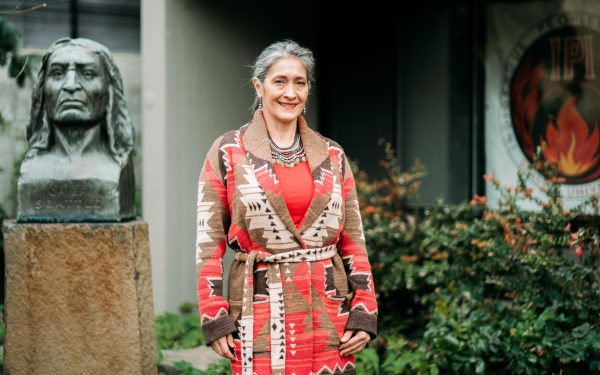Faculty Gets a Salary Bump as Lack of Transparency Continues
As a private university, Seattle University is not required to release any information on faculty pay rates. Through the work of professors and staff, along with key members of administration, who are starting to make changes to rectify faculty being underpaid for several years.
In the fall, David Madsen, a professor of history, started the push for pay transparency among the schools teaching faculty by providing his salary in an email to the school’s professorship. Madsen is retiring at the end of this year and wanted to encourage the rest of the school’s employees to share their own salaries, as well.
Chris Paul, the head of the communications department, kept the momentum going by providing a spreadsheet for staff to share their salary, but it received less traction than Madsen and Paul had hoped for. The effort ended with 32 contributors and a promise from Seattle U to conduct a market study of salaries. The study, which concluded in March, found that many faculty members were being underpaid—particularly those that work in the College of Arts and Sciences.
“We haven’t really moved much on salary transparency at all…I think more information for more people is a beneficial thing for the institution as a whole, and I think we have not moved much because it’s personal—it’s intimately personal,” Paul said. “[Lack of transparency] is a way that systems maintain inequity, because there is nothing to hold people accountable.”
With the conclusion of the study and the teaching staff receiving raises, the school is on track to remedy the underpayment of the staff. The conclusion of the study found that from 2011 to 2018, the faculty was paid as much as 95% of the equivalent salary at similar universities. The round of raises that took place this year serves as a “down payment” and is the first step for the school to bring staff salary up to 100%.
“It’s important to balance the sense of urgency with the need to get this right.”
This year also saw the creation of the Faculty Staff Senate, a step towards the idea of shared governance. All members of the school are meant to come together to make important decisions about what priorities the school should have and how funding is used to meet those goals.
“[Provost Shane Martin] seems to recognize the value of shared governance…and in pushing him with the argument that shared governance in many respects is about transparency and governance. The college requires us all to know about the budget and where the money is,” Madsen said.
The speed at which the university moves is not notoriously fast, as pointed out by Madsen, which can be especially frustrating for students and staff that want these discrepancies of pay taken care of immediately.
“There’s always a sense of urgency, understandably, when it comes to things like faculty compensation. I understand that there may be frustration,” Martin said. “It’s important to balance that sense of urgency with the need to get this right and to develop a system and a structure that would work for Seattle U, a system that is consultative and constructive.”
Matt Phillip, the director of compensation and benefits in the Human Resources department, hopes more market studies will be conducted in the future so that the school can stay up-to-date and competitive within the field of higher education so that top notch staff can be retained and attracted.
They are hoping to have the resources to do a study every two to three years. As the university gets new technology and more money to conduct this research, Philip says it will be a higher priority to maintain faculty pay at market rates.
“I think more information for more people is a beneficial thing for the institution as a whole.”
Philip explained that because of financial issues, the school redirected funds away from implementing the customary 2% to 3% performance increases. Phillip is just one of the many that hopes these types of studies can be done more regularly in the future.
“We had fallen behind at 95%. Some employers would look at that and say, ‘Oh 95% isn’t so bad,’” Phillip said. “But this university has said our philosophy is that we want to be at 100%, so we took [the study] as we need to begin a dialogue and approve funding for pay increases.”
In the coming years, the salary of faculty will hopefully continue to increase little by little. As more market studies occur, the school will be able to maintain a position of 100% pay. However, while these changes are made behind the scenes, people like Madsen and Paul will continue to advocate for more pay transparency.
Logan may be reached at
[email protected]










